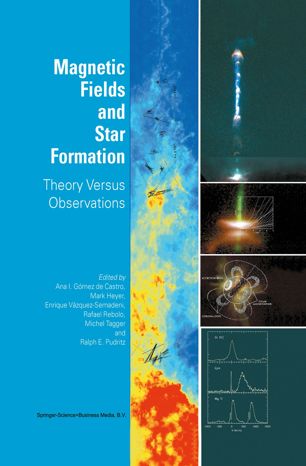

Most ebook files are in PDF format, so you can easily read them using various software such as Foxit Reader or directly on the Google Chrome browser.
Some ebook files are released by publishers in other formats such as .awz, .mobi, .epub, .fb2, etc. You may need to install specific software to read these formats on mobile/PC, such as Calibre.
Please read the tutorial at this link: https://ebookbell.com/faq
We offer FREE conversion to the popular formats you request; however, this may take some time. Therefore, right after payment, please email us, and we will try to provide the service as quickly as possible.
For some exceptional file formats or broken links (if any), please refrain from opening any disputes. Instead, email us first, and we will try to assist within a maximum of 6 hours.
EbookBell Team

4.4
72 reviewsMagnetic Fields play a key role in the physics of star formation on all scales: from the formation of the large complexes of molecular clouds to the formation of solar-like planetary systems. The plasma physics involved is non-linear and very complex, which requires the development of large numerical codes. An additional difficulty is that the detection and study of magnetic fields is not easy from an observational point of view, and therefore theoretical models cannot easily be constrained.
In the week from April 21st to 25th in 2003, a meeting was held on the Campus of the Universidad Complutense de Madrid (Spain) to join theoretical and observational efforts to address these issues. The objective was to define a set of relevant problems for the physics of star formation that can be properly addressed with the current or near-future instruments.
This book summarizes the results of this intensive week of work. The book is written in a comprehensive manner and reviews our current knowledge of the subject. It also represents an updated account of the ideas and thoughts of the scientists working in the field of Star Formation. The contributions are presented in six chapters which correspond to the six fundamental issues (sessions) on which the discussion was focused during the workshop: the physics of turbulence in the Interstellar Medium (ISM), the formation of structure in the ISM, the formation of stars within dense cores of molecular gas, the physics of accretion disks, the physics of outflows and their interaction with the ISM, and the interaction between the stellar magnetosphere and accretion disk.
Each chapter starts with a comprehensive summary written by one of the editors, which includes input from the contributions as well as the editor's own thoughts on the subject. For all these reasons the book is well-suited as a primer to introduce graduate students in the richness of this field of research.